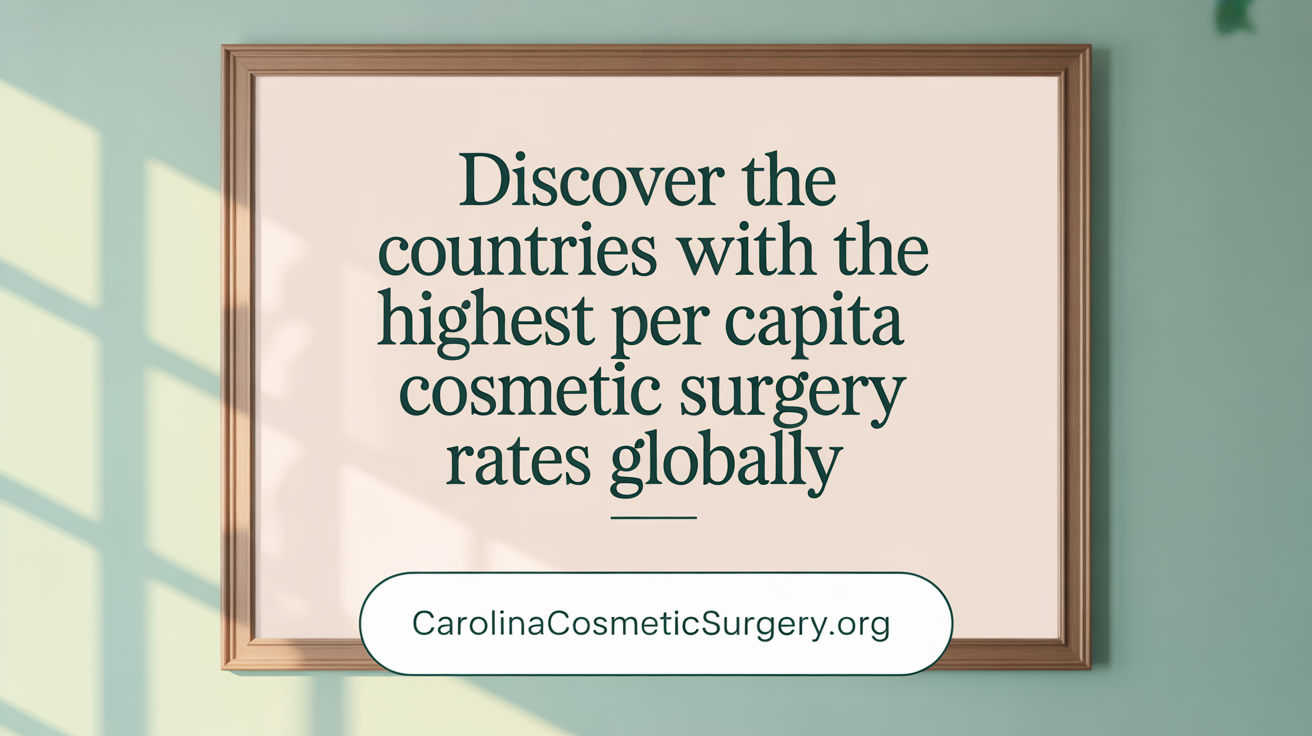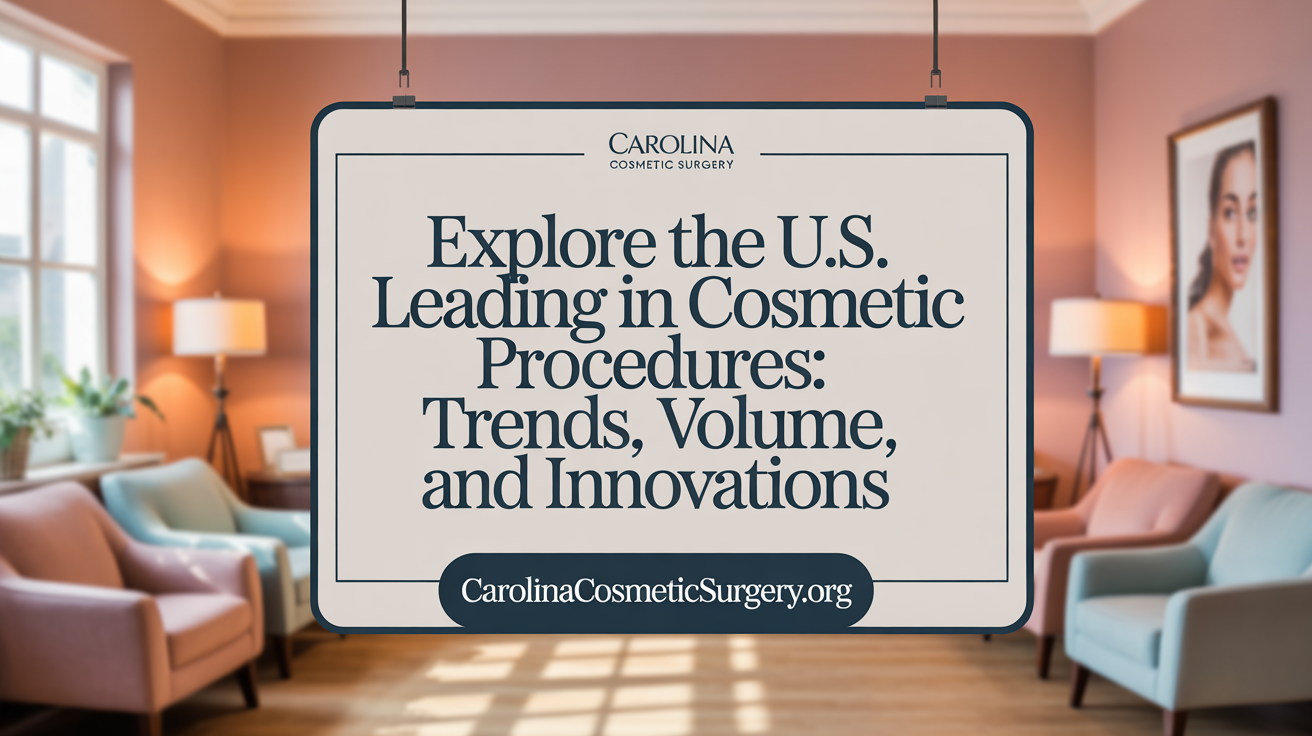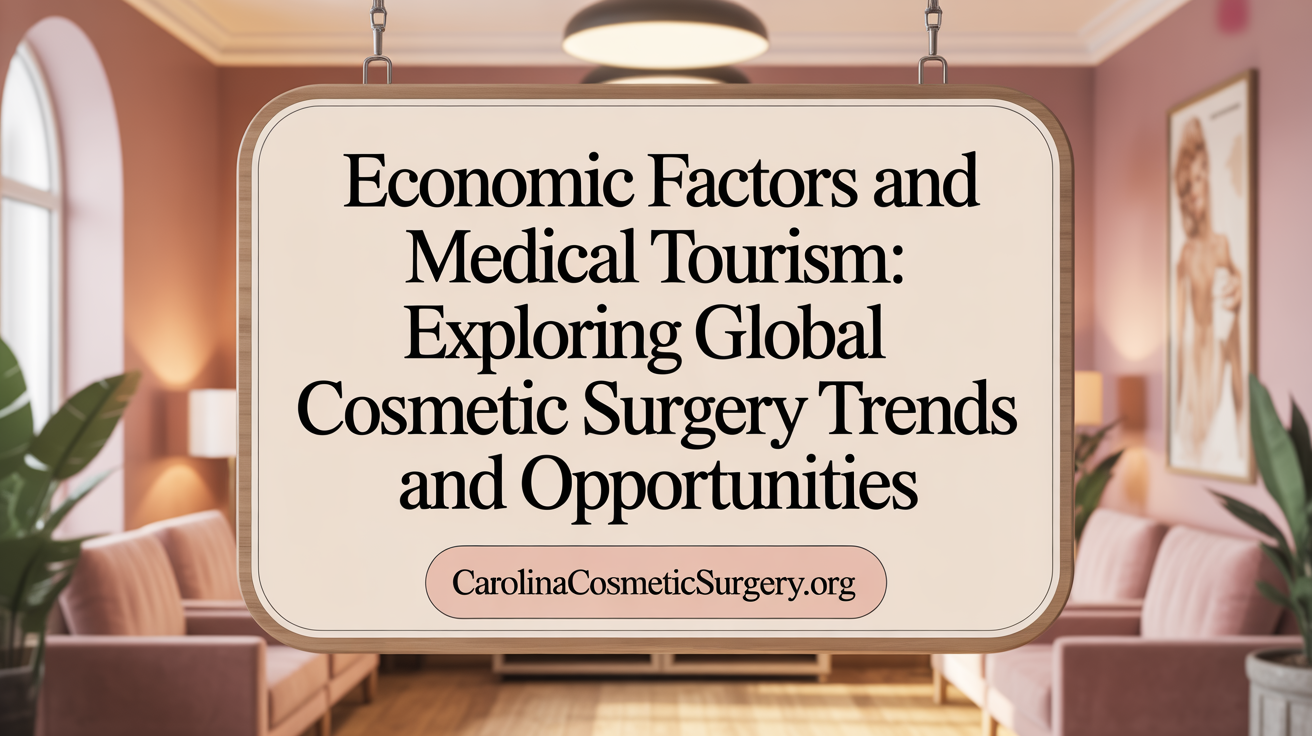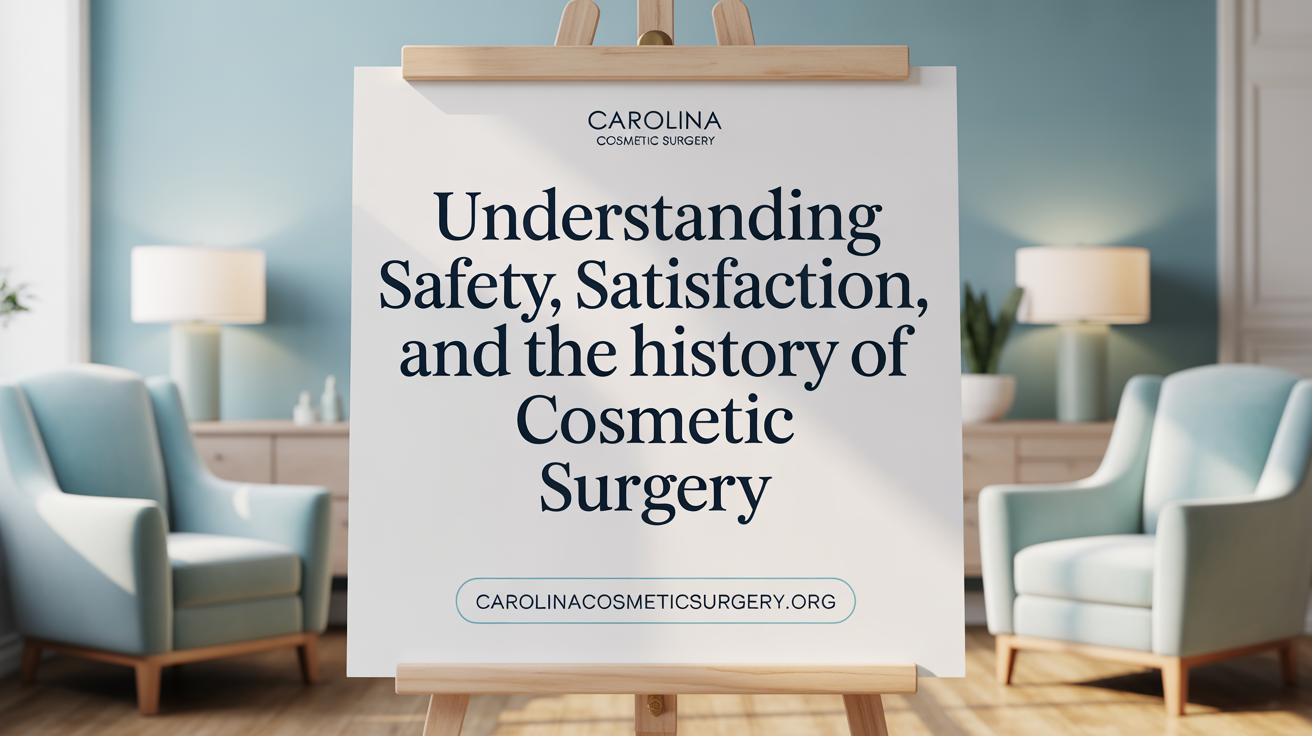Unveiling the Global Cosmetic Surgery Landscape
Cosmetic surgery has evolved into a dynamic and rapidly growing industry worldwide, fueled by cultural trends, technological advancements, and rising demand for aesthetic enhancements. This article delves into the latest statistics and reveals which countries lead in the number and frequency of cosmetic procedures. By exploring per capita rates, popular treatments, demographic influences, and industry leadership, we aim to provide a comprehensive overview of cosmetic surgery's global footprint in 2024.
Global Leaders in Cosmetic Surgery Per Capita: Which Nations Top the List?

Which countries lead globally in cosmetic surgery per capita?
South Korea is the clear leader in the global ranking of per capita cosmetic procedures, performing approximately 8.90 procedures per 1,000 residents each year. This high rate underscores South Korea's reputation as a major hub for aesthetic enhancements and facial and body transformations.
Argentina closely follows, with 8.81 procedures per 1,000 people, making it the second most active country in cosmetic surgeries per capita. Brazil ranks third with 7.62 procedures per 1,000 residents, especially popular for surgical procedures like liposuction and breast augmentation.
Such figures reveal that these nations consistently prioritize cosmetic enhancements, driven by cultural norms, societal influences, and affordable access. Other notable countries with high per capita rates include Colombia (7.26), Greece (6.33), Germany (5.72), Turkey (5.40), Mexico (5.31), Italy (4.79), and Spain (4.62). Collectively, these countries exemplify the widespread acceptance of aesthetic procedures across different continents.
Comparative statistics of cosmetic procedures per 1000 people
| Country | Procedures per 1000 People | Notes |
|---|---|---|
| South Korea | 8.90 | Leading globally in cosmetic surgery per capita |
| Argentina | 8.81 | Second highest, popular for both surgical and non-surgical procedures |
| Brazil | 7.62 | Most performed in South America, known for surgical procedures |
| Colombia | 7.26 | Growing popularity in facial and body procedures |
| Greece | 6.33 | High rate, especially in facial surgeries |
| Germany | 5.72 | Strong presence of minimally invasive procedures |
| Turkey | 5.40 | Known for affordability and variety of cosmetic options |
| Mexico | 5.31 | Rising trend in aesthetic procedures around Latin America |
| Italy | 4.79 | Popular for breast and face surgeries |
| Spain | 4.62 | Increasing demand in both surgical and non-surgical fields |
Ranking countries by frequency of procedures
Countries leading in sheer volume of cosmetic surgeries are often at the forefront of global trends. South Korea's per capita rate reflects a cultural embrace, while nations like Brazil and the United States lead in total number of procedures performed annually.
In 2023, the US topped with around 6.2 million procedures, followed by Brazil with about 3.3 million. However, when considering population size, South Korea and Argentina come out on top per capita. This indicates a strong cultural focus on aesthetic ideals and innovation.
Understanding these rankings helps illuminate regional preferences and the societal importance placed on cosmetic alterations, shaping future industry growth and regional practices.
More information
Search query: "Top countries by cosmetic surgery rates per capita 2024"
The United States: The Largest Market by Volume of Procedures

Which country performs the highest number of cosmetic procedures annually?
The United States holds the top position globally for the highest number of cosmetic procedures performed annually. In 2023, over 6.2 million procedures were recorded, making it the leading country in terms of total volume. This extensive activity is a result of the country's advanced healthcare system, a wide network of experienced, board-certified plastic surgeons, and a societal culture that highly values aesthetic enhancement.
Volume and variety of procedures in the U.S.
The American market features a diverse range of cosmetic treatments. Surgical options like liposuction and breast augmentation dominate, but minimally invasive procedures such as Botox and hyaluronic acid fillers are increasingly prevalent. In 2024, Botox and other neuromodulators led minimally invasive procedures, followed by fillers and skin resurfacing treatments.
The demand for both surgical and non-surgical procedures has marked a significant growth trend, with an increase of about 40% over the past four years. Americans spent over nine billion dollars on these treatments in 2020 alone. The popularity of less invasive options reflects a societal shift toward quick, less painful aesthetic solutions.
Leading surgeons and popular treatments
Renowned surgeons and specialized clinics, especially in upscale areas like Beverly Hills, contribute to the high standards and popularity of cosmetic procedures in the U.S. Trends show that liposuction and breast augmentation remain favorites, alongside innovations in minimally invasive techniques.
Gender distribution shows women represent about 92% of patients, although interest among men is rising, illustrating broader demographic engagement.
| Procedure Type | 2023 Volume (Million) | Notable Features |
|---|---|---|
| Surgical Procedures | 15.8 | Liposuction, breast augmentation, eyelid surgery |
| Non-surgical Procedures | 8.8 | Botox, HA fillers, skin resurfacing |
Additional insights
The U.S. also leads in the number of procedures involving minimally invasive techniques, driven by societal preferences for quick, visible results with lower risks.
Overall, the market's growth is supported by technological advances, increased societal acceptance, and the expertise of a large, qualified surgical community, making the United States the largest market for cosmetic procedures globally.
Rising Trends and Growth Patterns in Cosmetic Surgery Worldwide
What are the main trends and growth patterns in cosmetic surgery worldwide?
The global cosmetic surgery landscape is experiencing steady growth. In 2023, nearly 35 million aesthetic procedures were performed across the world, which represents a 3.4% increase from the previous year. Over the past four years, the total number of procedures has increased by about 40%, highlighting the consistent upward trend.
Surgical procedures still hold a significant share of the market but are growing at a faster rate compared to non-surgical treatments. Liposuction and breast augmentation remain among the most popular surgical options globally, with liposuction alone accounting for around 2.2 million surgeries in 2023.
Interestingly, minimally invasive procedures are increasingly favored. Treatments such as Botox and hyaluronic acid fillers have seen remarkable growth, with Botox procedures reaching over 9.5 million in 2023. The rise of these less invasive techniques reflects a societal shift towards quick, effective cosmetic solutions that require less recovery time.
Across regions, countries like South Korea, the United States, Brazil, and Argentina lead in the volume and per capita rates of cosmetic procedures. The trend shows a move toward more accessible and diverse options for individuals seeking aesthetic improvements.
Overall, the market for cosmetic enhancements is not only expanding but also evolving with a heavier tilt toward minimally invasive methods, driven by consumer demand for less risk, less downtime, and natural-looking results.
Cultural and Regional Influences Shaping Cosmetic Surgery Preferences
How do cultural and regional factors influence cosmetic surgery prevalence and preferences?
Cultural and regional influences play a significant role in shaping the popularity and types of cosmetic procedures across the globe. Different societies have specific standards of beauty that guide individuals' choices about aesthetic enhancements.
In South Korea, for example, procedures like double eyelid surgery, eye revision surgeries, and jawline contouring are particularly popular. These procedures align with East Asian beauty ideals emphasizing bright, enlarged eyes and balanced facial features. South Korea leads the world in plastic surgeries per capita, with 8.9 procedures per 1,000 people, reflecting deep cultural acceptance and societal value placed on aesthetic perfection.
Meanwhile, Western countries such as the United States and Brazil tend to focus on procedures that emphasize body curves and youthful appearances. Breast augmentations, liposuction, and facial rejuvenation are especially favored, aligning with cultural standards that celebrate curves and vitality.
Brazil, in particular, is renowned for its high volume of plastic surgeries, many of which target the Brazilian ideal of a well-shaped, toned body. With more than 2.7 million procedures performed in 2021, Brazil's cultural perspective promotes body image ideals deeply rooted in regional and social contexts.
Media, especially social platforms like Instagram, has a profound impact on shaping these trends. The global spread of beauty ideals through social media has led to increased demand for procedures that may not have been traditionally prevalent in certain cultures. Influencers and celebrities set beauty trends that transcend borders, encouraging individuals worldwide to pursue procedures aligned with contemporary global standards.
To sum up, cultural norms and regional aesthetic ideals heavily influence cosmetic surgery choices, with societal beauty standards guiding both the popularity of specific procedures and the perception of attractiveness. For clinicians, understanding these cultural nuances is vital for offering personalized and culturally sensitive care that aligns with patient expectations.
Popular Cosmetic Procedures Around the World: A Comparative Overview
What are the most popular cosmetic procedures in different countries?
Globally, liposuction remains the most common surgical cosmetic procedure, with about 2.2 million surgeries performed in 2023. Close behind are breast augmentation and eyelid surgeries, which are also widely performed across various regions.
South Korea and Argentina lead in per capita cosmetic surgery rates, approximately 8.9 and 8.81 procedures per 1,000 individuals, respectively. In South Korea, facial procedures like double eyelid surgery, eye revision, and nose jobs are particularly popular. Argentina, similarly, emphasizes facial aesthetics with high rates of eyelid and rhinoplasty surgeries.
In Brazil and the United States, the volume of procedures is exceptionally high. Brazil performs over 2.7 million procedures annually, including a broad range of surgical options such as liposuction, breast augmentation, and eyelid surgeries.
The U.S. stands out for the sheer number of procedures, with over 6.2 million performed in 2023, encompassing both surgical and non-surgical treatments. Americans favor minimally invasive approaches like Botox, which alone saw 9.5 million procedures in 2023, and hyaluronic acid fillers.
Economic factors and cultural influences shape these trends. Countries like Brazil and South Korea prioritize facial and body transformations, often promoted through social media and cosmetic tourism. Meanwhile, in regions with smaller populations but high per capita rates, facial enhancements are particularly preferred.
This diversity illustrates how local beauty standards, social media influence, and healthcare infrastructure influence the popularity of specific procedures in different nations.
Demographic Dynamics: Gender and Age Trends in Cosmetic Surgery
What demographic trends are observed in cosmetic surgery?
Women still dominate the cosmetic surgery landscape, comprising about 92% of all patients worldwide. This trend underscores the traditional gender disparity in aesthetic procedures, but recent data indicates that men are increasingly participating in cosmetic enhancements.
The rise in male involvement reflects a societal shift where body image and self-care are gaining importance among men. Surveys and industry reports show more men seeking procedures, driven by a need to stay competitive in professional environments and to improve personal confidence.
Another notable trend relates to age groups. Nearly half of all cosmetic treatments are performed on individuals aged 40 to 54. This supports the focus on anti-aging and rejuvenation procedures popular among middle-aged adults.
This data demonstrates how societal norms and individual perceptions of beauty are expanding the pool of potential patients. Younger adults are also increasingly interested in aesthetic enhancements, further diversifying the demographic profile.
Overall, demographic patterns in cosmetic surgery reveal an industry that is adapting to changes in societal attitudes, embracing greater diversity in gender and age. This broadening participation indicates a growing normalization and acceptance of cosmetic procedures across different segments of the population.
Industry Leaders and Innovators Driving Cosmetic Surgery Advances

Who are the key players and industry leaders in the global cosmetic surgery landscape?
The cosmetic surgery industry features several prominent companies that propel technological advancements and expand market reach. Leading organizations such as Johnson & Johnson's MENTOR, AbbVie, Galderma, Cynosure, Evolus Inc., Revance, and Airsculpt Technologies are at the forefront of innovation.
These corporations invest heavily in research and development to introduce cutting-edge procedures and products. They develop FDA-approved minimally invasive treatments, including neuromodulators like Botox, dermal fillers, and laser technologies.
North America, particularly the United States and Canada, holds the largest share of the market. This dominance is driven by a robust infrastructure, a high number of accredited surgeons, and widespread consumer acceptance.
Meanwhile, the Asia-Pacific region, with South Korea as a leader, is rapidly gaining ground. South Korea is renowned for its high per capita rate of cosmetic procedures, especially eye and facial surgeries.
Regional market leaders
| Region | Notable Leaders | Focus Areas | Market Strengths |
|---|---|---|---|
| North America | Johnson & Johnson, Allergan, Revance | Botox, dermal fillers, laser treatments | Advanced technology, high consumer demand |
| Asia-Pacific | South Korea's local clinics, Medison | Double eyelid surgery, liposuction | Large patient base, innovation in minimally invasive techniques |
| Europe | Galderma, Cynosure | Fillers, skin resurfacing | Strong research institutions and regulatory support |
Emerging trends in cosmetic surgery technology
Recent trends highlight significant innovations transforming the industry. Minimally invasive techniques now include not only Botox and HA fillers but also advanced laser therapies for skin rejuvenation.
Technological breakthroughs like ultrasound-assisted liposuction, 3D facial imaging, and robot-assisted surgery are becoming more common. These innovations aim at reducing recovery times while improving precision and outcomes.
Augmented reality (AR) and virtual reality (VR) tools are also being integrated to allow patients to preview expected results before procedures, increasing satisfaction and decision confidence.
As the market grows, more companies are adopting a digital-first approach, enhancing patient engagement through teleconsultations, AI-driven diagnostic tools, and online education platforms.
This blend of technological innovation and regional leadership continues to shape the future of cosmetic surgery globally, making procedures safer, more accessible, and tailored to individual needs.
Medical Tourism and Regional Economic Factors Influencing Cosmetic Surgery

How do affordability and tax policies influence surgery rates?
Economic considerations play a significant role in the popularity of cosmetic procedures worldwide. Countries like Brazil, with affordable prices and tax exemptions, have become hotspots for medical tourism, particularly in Rio de Janeiro. These economic incentives make it easier for patients from wealthier regions to access desired enhancements without the high costs typically associated with such procedures.
Which countries serve as regional hubs for cosmetic surgery tourism?
South Korea stands out as a global leader, with the highest procedures per capita and a robust industry centered around face and body transformations. Its popularity is driven by advanced techniques, highly trained surgeons, and cultural trends favoring aesthetic modification. Similarly, Turkey and Mexico have established strong reputations as affordable destinations for surgical and non-surgical cosmetic treatments, attracting international patients seeking quality care at reduced costs.
How do economic incentives fuel the frequency of procedures?
Economic benefits, including lower costs and tax advantages, encourage both local and international patients to seek cosmetic procedures. For instance, the high volume of surgeries in Brazil is partly due to lucrative, tax-exempt procedures that stimulate both demand and medical tourism. As more countries adopt policies that favor cosmetic surgery, global procedure numbers continue to rise, reflecting an industry driven by economic motivations.
| Country | Popular Procedures | Economic Factors | Regional Significance |
|---|---|---|---|
| South Korea | Eyelid surgery, jaw surgeries, rhinoplasty | High per capita procedures, tech-savvy industry | Leading global destination for face and body alterations |
| Brazil | Liposuction, breast augmentation | Affordable, tax-free procedures, tourism appeal | Major hub for surgical enhancements, especially in Rio |
| Turkey | Liposuction, eyelid surgery, nose jobs | Cost-effective, high-quality healthcare services | Increasingly popular for both local and international patients |
| Mexico | Non-surgical treatments, liposuction | Proximity to US market, lower costs | Growing reputation as a medical tourism hub |
Global cosmetic surgery growth is a complex interplay of cultural trends, economic policies, and regional healthcare infrastructures. Countries leveraging affordability and strategic incentives continue to attract a steady flow of patients worldwide, boosting their local economies and shaping the industry landscape.
Safety, Satisfaction, and Historical Context in Cosmetic Surgery

What are the complication and mortality rates?
The overall safety profile of cosmetic surgery is relatively high, with complication rates generally below 1%. However, some procedures, such as breast surgeries, tend to have slightly higher risks. Mortality rates are low but significant, with approximately 100 deaths reported annually in the U.S. due to complications like fat embolism and issues related to liposuction. This translates to roughly 20 deaths per 100,000 procedures, highlighting the importance of choosing qualified surgeons and adhering to safety protocols.
How satisfied are patients after cosmetic procedures?
Patient satisfaction is generally quite high, with about 70% of individuals feeling more positive about their bodies following their procedures. The rise in minimally invasive treatments, such as Botox and hyaluronic acid fillers, has also contributed to increased satisfaction, offering quicker results with less recovery time.
What is the historical origin of plastic surgery?
Plastic surgery has a long history, dating back to around 600 B.C. when Sushruta, often called the 'father of surgery,' performed early forms of rhinoplasty. Over centuries, techniques have evolved dramatically, leading to the sophisticated procedures available today, often performed by board-certified surgeons worldwide. The development of modern techniques has improved safety, outcomes, and patient satisfaction, making aesthetic enhancement more accessible and successful than ever before.
A Global Outlook on Cosmetic Surgery: Growth, Diversity, and Innovation
Cosmetic surgery continues to thrive worldwide, shaped by regional cultures, economic factors, and technological advancements. South Korea's per capita leadership, the United States' immense procedure volume, and emerging trends toward minimally invasive treatments showcase a diverse and evolving landscape. As industry leaders innovate and demographics shift, the global market projects sustained growth and broader accessibility. Understanding cultural nuances and patient safety remains paramount, ensuring cosmetic surgery not only enhances appearance but also enriches confidence and quality of life across nations.
References
- Top 20 countries with the highest plastic surgery rates per capita
- Countries with most plastic surgeries worldwide 2024 - Statista
- Revealing Plastic Surgery Statistics - Kutest Kids
- [PDF] ISAPS Global Survey_2023.indd
- Plastic Surgery Statistics & Facts
- What Countries Are Leading in Plastic Surgeons?
- Global Survey 2023: Full Report and Press Releases - ISAPS
- Global Survey 2024: Full Report and Press Releases - ISAPS
- Plastic Surgery Statistics - American Society of Plastic Surgeons
- Plastic and Cosmetic Surgery Statistics (2025) - Medihair
